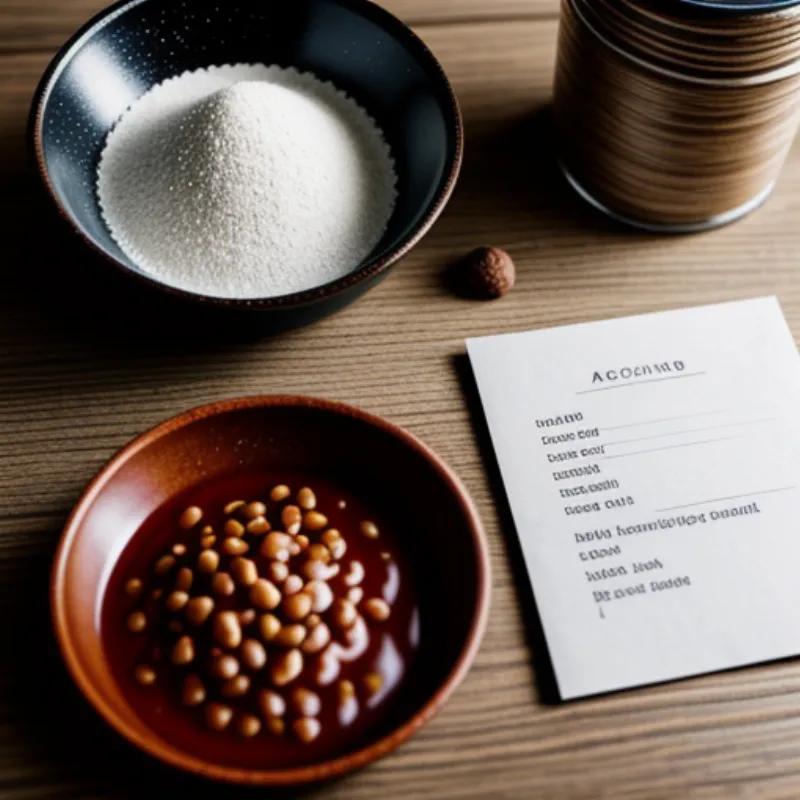Adobo sauce. The very name conjures up images of sizzling garlic, fragrant peppercorns, and a deep, savory flavor that’s the cornerstone of Filipino cuisine. This isn’t just a sauce; it’s a marinade, a braising liquid, and a love letter to Filipino culinary heritage. Today, we’re diving deep into the heart of this beloved sauce, sharing a traditional recipe and answering your burning questions. Get ready to unlock a world of flavor that’s surprisingly easy to create at home.
What is Adobo Sauce?
Adobo sauce is a cornerstone of Filipino cuisine, known for its rich, savory, and tangy flavor profile. It’s traditionally made with vinegar, soy sauce, garlic, peppercorns, and bay leaves, creating a marinade and braising liquid that infuses meats and seafood with incredible depth and aroma. The beauty of adobo lies in its simplicity and versatility.
Why You’ll Love This Recipe
- Authentic flavors: This recipe stays true to the traditional Filipino adobo, delivering the classic taste you’ll love.
- Easy to follow: We’ll guide you through each step with clear instructions, making the process a breeze.
- Versatile sauce: Use this adobo sauce to marinate chicken, pork, seafood, or even vegetables for a flavorful meal.
Ingredients You’ll Need
For the Adobo Sauce:
- 1/2 cup white vinegar (cane vinegar preferred for a more authentic taste)
- 1/4 cup soy sauce (use low-sodium if desired)
- 4 cloves garlic, crushed
- 1 teaspoon whole black peppercorns
- 2 bay leaves
- 1/2 cup water
Optional Add-ins:
- 1 tablespoon brown sugar (for a touch of sweetness)
- 1 teaspoon paprika (for a smoky note)
- 1/2 teaspoon chili flakes (for a hint of heat)
 Adobo sauce ingredients
Adobo sauce ingredients
Equipment You’ll Need:
- Saucepan (medium-sized)
- Measuring cups and spoons
- Garlic press (optional, for crushing garlic)
How To Make Adobo Sauce: A Step-by-Step Guide
-
Combine the ingredients: In a medium saucepan, combine the vinegar, soy sauce, garlic, peppercorns, bay leaves, and water (or broth). If you’re using any of the optional add-ins, add them now.
-
Simmer the sauce: Place the saucepan over medium heat and bring the mixture to a simmer. Reduce the heat to low and let it simmer gently for 10-15 minutes, allowing the flavors to meld.
-
Adjust the consistency: If you prefer a thicker sauce, continue simmering for a few more minutes, or until it reaches your desired consistency.
-
Strain the sauce: Once the sauce is ready, strain it through a fine-mesh sieve to remove the garlic, peppercorns, and bay leaves.
 Simmering adobo sauce
Simmering adobo sauce
Tips and Tricks for the Best Adobo Sauce:
- Vinegar choice: Cane vinegar is the traditional choice for Filipino adobo, lending a slightly sweet and tangy flavor. However, you can use white vinegar as a substitute.
- Soy sauce variation: Adjust the amount of soy sauce to your preference. For a less salty sauce, use low-sodium soy sauce.
- Garlic power: For a more intense garlic flavor, lightly crush the garlic cloves before adding them to the sauce.
- Simmering time: The longer you simmer the sauce, the more concentrated the flavors will become.
- Storage: Store leftover adobo sauce in an airtight container in the refrigerator for up to 1 week.
FAQs About Making Adobo Sauce:
Q: Can I make adobo sauce ahead of time?
A: Absolutely! In fact, adobo sauce tastes even better the next day after the flavors have had time to meld.
Q: What can I use adobo sauce for?
A: The possibilities are endless! Use your adobo sauce to marinate chicken, pork, seafood, tofu, or even vegetables. It’s also delicious drizzled over rice, noodles, or eggs.
Q: I like my adobo sauce spicy. Can I add chili peppers?
A: Absolutely! Feel free to add a bit of heat with your favorite chili peppers. You can add them whole, chopped, or in flake form.
Serving and Enjoying Your Adobo Sauce
- Classic Filipino Feast: Serve your adobo sauce with steamed rice and a side of stir-fried vegetables for an authentic Filipino meal.
- Versatile Protein Enhancer: Use it as a marinade for chicken, pork, beef, seafood, tofu, or tempeh, then grill, pan-fry, or bake to perfection.
- Flavorful Dipping Sauce: Drizzle it over grilled meats, spring rolls, or dumplings for a burst of savory goodness.
- Creative Culinary Twist: Incorporate it into your favorite recipes, such as stews, soups, or even pasta sauces, for a unique depth of flavor.
 Filipino adobo chicken
Filipino adobo chicken
Conclusion
There you have it – your passport to the heart of Filipino cuisine! Making authentic adobo sauce at home is easier than you think, and the reward is a flavor explosion that will leave you wanting more. This recipe is a delicious adventure waiting to happen, so grab your ingredients and get ready to savor the magic of adobo. Don’t forget to share your culinary creations and tag us on social media – we can’t wait to see your delicious masterpieces!
